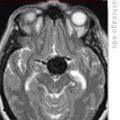This is the VOA Special English Health Report.
We often hear the term brain aneurysm. Joe Biden had two of them twenty years ago. Doctors saved his life. Now the sixty-five year old senator from Delaware has just been named the vice presidential choice of Democrat Barack Obama.
Ohio's first black congresswoman, however, was not so lucky. Fifty-eight year old Representative Stephanie Tubbs Jones died last week within hours after a brain aneurysm burst. Doctors said she may have had no warning, which would not be unusual.
A brain aneurysm is a weak or thin area along an artery wall in the brain. It can become so thin that it ruptures and bleeds. The most common form looks like a small, round berry hanging from the artery.
The Mayo Clinic in Minnesota says as many as fifteen million people in the United States, or five percent, have a berry aneurysm. Fewer than thirty thousand will ever suffer a rupture.
The National Institute of Neurological Disorders and Stroke estimates that forty percent of victims die within twenty-four hours. Another twenty-five percent die within six months.
People may live a long and healthy life and never know they have an aneurysm. But sometimes, if it gets big enough, it can cause pain or other problems that lead to its discovery.
In Joe Biden's case, his neck hurt for several weeks. Doctors thought he had a pinched nerve and a virus. But in February of nineteen eighty-eight, tests showed a leaking artery at the base of his brain. Doctors operated successfully, and again three months later for an aneurysm in another area.
Janet Sutherland is director of the Chicago chapter of the Brain Aneurysm Foundation, a support group. She describes what happened when she suffered a rupture in March of two thousand four.
It began with the worst headache ever. She called emergency services. Rescuers found her collapsed in her kitchen.
The operation was a success. But she was in a coma for three weeks. She woke up blind and unable to move. She had two surgeries to return her sight and another to correct a second aneurysm. She spent five months in the hospital and many months in physical therapy.
Today Janet Sutherland can walk again, and says she can see better than ever.
Experts say most brain aneurysms happen in people born with an abnormality in an artery wall. Other causes can include head injuries, high blood pressure, infections, tobacco use and use of stimulant drugs.
And that's the VOA Special English Health Report, written by Caty Weaver. I'm Steve Ember.

